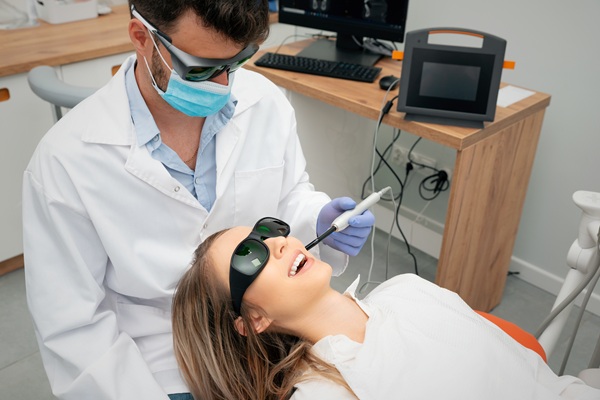What Happens During an Invisalign® Appointment?

If you are reading this article, you are already considering getting Invisalign treatments. This article will cover everything you need to know about these clear aligners and what treatment entails.
Invisalign is a brand of clear aligners that give patients a less conspicuous way to deal with their teeth alignment problems. It consists of using clear trays to push teeth into a better position over a period of time. Patients get a number of trays at the start of treatment and each pushes the person's teeth 0.33 millimeters closer to the desired alignment. It is then switched out with another tray that pushes the person's teeth closer to the final position.
It can be used to address issues like an incorrect bite, crooked or misaligned teeth. Such bite alignment problems can lead to a variety of unpleasant symptoms like:
- Soreness
- Headaches
- Snoring
- Unhealthy gums
- Jaw pain
- Worn down teeth
- Tooth decay
What to expect during an Invisalign appointment
Here are the various steps patients who are interested in orthodontic treatments with Invisalign should expect:
1. A consultation
During the first visit, the dentist will discuss how the treatment works. They will take an impression and pictures of the patient's mouth. These pictures are used to make a better analysis of their teeth structure.
If the dentist feels the patient is a good candidate for Invisalign, digital imaging technology is used to make an impression of the patient's mouth. It leads to more accurate scans that can be immediately transmitted to an Invisalign lab. It takes about three weeks for the lab to make the aligners and get them back to the dentist.
2. Testing the aligners
During the second appointment, the patient gets to test out their first set of aligners. They will also have attachments added to their teeth. These attachments help to hold the aligners tightly on teeth. It creates holds and pushes for natural movements that occur while the device is being worn. There is no pain during the procedure and the materials used are tooth-colored, making attachments hard to detect. Attachments can be removed later, and they cause no damage to teeth.
A procedure called interproximal reduction might be performed for the same reason. It involves sanding parts of some teeth to create room for the aligners. The procedure is not painful but it does involve the use of anesthetics. The patient will be given their set of aligner trays if everything looks good.
3. Treatment
Once the patient gets their aligner trays, it is their responsibility to wear them for at least 22 hours each day. Aligners should only be taken out for meals or oral hygiene.
The patient will be scheduled for follow-up appointments to monitor their progress. During these appointments, changes might be made to the attachments or more trays added to the treatment.
4. Finishing treatment
Once the patient has gone through the treatment, the dentist will evaluate their results. If satisfied, attachments will be removed and the patient is switched to retainers. These help to keep their teeth in their new position.
Treatment has never been more subtle
Thanks to Invisalign, you can fix orthodontic issues without having to wear metal braces that look like railroad tracks on your teeth. Stop by our Brooklyn office to get started with your treatment.
Here's how you reach us…
Request an appointment here: https://mgdental.com or call MG Dental at (718) 416-6444 for an appointment in our Brooklyn office.
Check out what others are saying about our services on Yelp: Read our Yelp reviews.
Recent Posts
Many have heard of Invisalign®, a type of clear aligner treatment. However, fewer are familiar with lingual braces and how they work. This review offers an in-depth look at Invisalign vs. lingual braces with insights into the pros and cons of each option and when one might be preferable to another. Invisalign and lingual braces both…
A laser dentist can perform dental procedures with better accuracy and effectiveness. Read on to learn about laser dentistry and how it can help make some treatments more comfortable. The field of dentistry has witnessed significant advancements in the last few years. New technologies are transforming what dentists are able to offer their patients, from…
Getting approval for dental implants is the first step in the process. Anyone interested in dental implants must undergo a consultation, examination, and assessment to be a viable candidate for the surgical process. Since an implant is surgically inserted into the jawbone, the patient needs to have sufficient bone and be free of gum disease.…
A broken dental crown is often a sudden issue. Dental crowns are permanent dental restorations. A crown may dislodge because of an injury, an accident, wear, or even old age. The dentist will determine if your crown needs repairs or a replacement. If you want to know what the dentist does to repair or replace…


